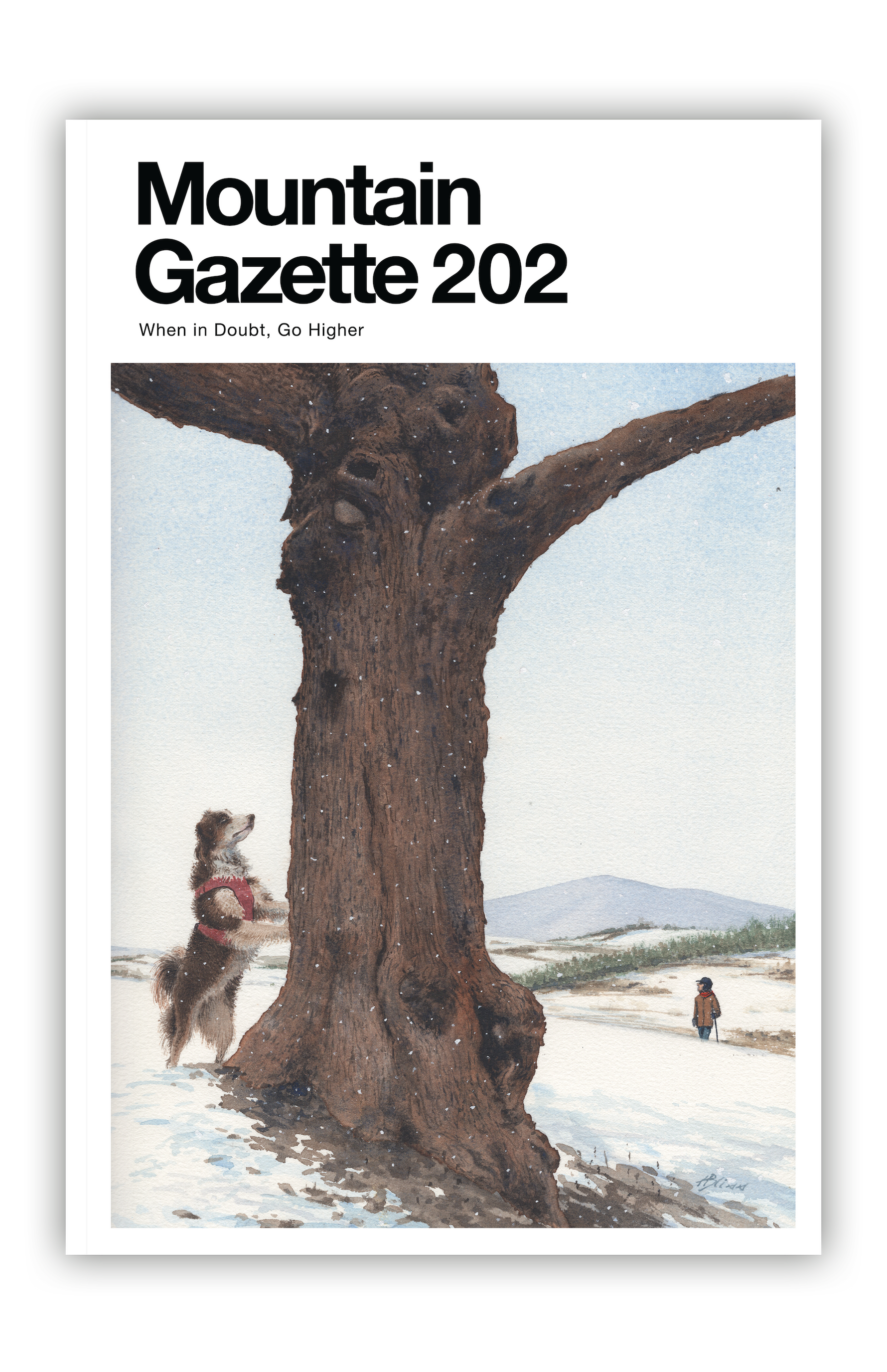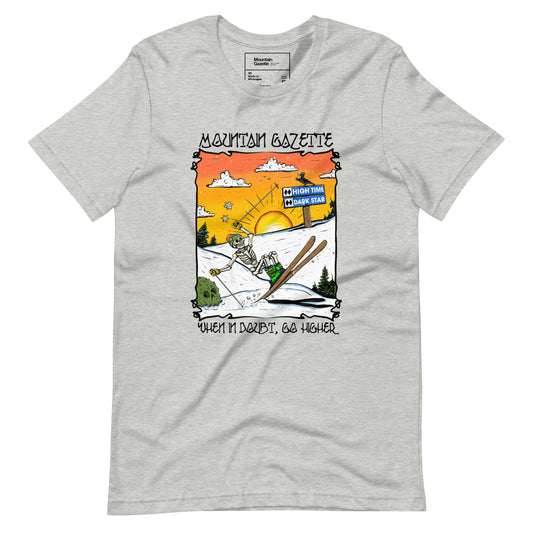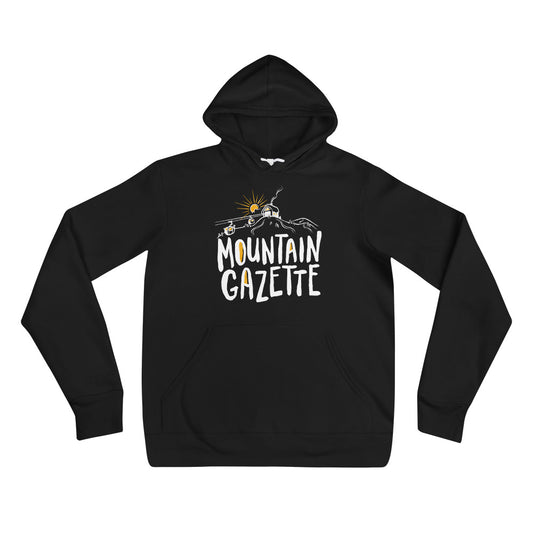
By Hannah Truby
Last week, we put out a call about the possible layoff of a local forecaster at the Sierra Avalanche Center. While SAC hasn’t received any definitive news yet, thousands more have lost their jobs due to the same federal budget cuts.
Over the past few days, more than 3,400 U.S. Forest Service employees have been let go.
The cuts are a part of the Trump administration’s push to shrink the federal government, to reduce bureaucracy, and replace civil servants with “our people”, as the VP noted.
If one thing’s for sure–these workers are not bureaucrats. They are the people who help manage 193 million acres of public land. They are ecologists, recreation workers, wildfire mitigators, trail keepers, timber markers, and field technicians.
No one works harder for less. No one takes a crummy, low-paying job with poor benefits out of sheer passion more than a U.S. Forest Service worker. They are public servants, dedicated to protecting and maintaining our shared landscapes. And to us at Mountain Gazette–along with Amanda Monthei–they are very much our people.

Monthei is one of our contributing writers here at Mountain Gazette. For years, she was a wildland firefighter, experience and expertise she now channels into her work as a writer and podcast host of Life with Fire.
-
Monthei wrote a piece about wildland firefighting and the people who do it for Mountain Gazette 195. You can listen to it here on The Mountain Gazette Library.
Monthei took a break from podcasting and protesting this week to speak with me about what these layoffs mean for public lands, wildfire operations, and where the heck we go from here.
Hannah: You started the Life with Fire podcast to explore how we coexist with fire. Have your views on that coexistence changed over time?
Amanda: It’s really evolved from an opportunity to basically help myself learn more about fire to really being a platform that folks in the fire world and outside of it seem to trust for just kind of updates and information about the wildfire space as I'm able to provide it. I've found that I've been a little too busy lately to give it the attention that it needs, but, when things like this happen–with 5,000-some people from the Forest Service and the National Park Service being fired just last week–it's been really nice to have Life with Fire as a platform with a built-in audience that’s there when I need to tap in and engage.
How will these layoffs affect wildfire operations?
There are a number of things that this is going to impact outside of the fire space, but in terms of inside fire operations, the biggest impact will be our lack of surge capacity, which is basically our ability to fill positions on fire crews that traditionally might have been filled with folks from non-fire positions but do have fire qualifications, so when we’re super busy in the middle of summer and we're running out of crews or someone is sick, we have these reserve crews of fire folks to step in. They also help with critical roles in managing a fire, some of the behind the scenes stuff that keeps us running, like logistics, planning, mapping, just making sure that things are operationally sound.
Fighting fire is not only being out on the front lines and fighting it, it's also being able to go back to camp and know that you have a place to sleep, bathrooms, medical supplies, a place where you know that you'll be able to get accurate up-to-date maps the next morning when you go back out to line. So they’re a really important function.
-
More on this in Monthei’s recent podcast episode – How the Loss of Federal Workers Will Have A Massive Impact on Fire Operations This Fire Season, With Riva Duncan

You recently wrote about the layoffs on your Substack–(The Best People I Know Are Losing Their Jobs). What was the most heartbreaking or infuriating part of reporting on this?
Absolutely the most infuriating part was watching it become more and more humanized for me. Seeing people that I know from my time in the Forest Service made it very real. Many of them were my age, my generation, who worked seasonally for five, seven, even eight years. And seasonal work isn’t an easy lifestyle–living in rundown government housing in remote areas, miles from a grocery store, often with no internet, working long, hard summers away from family and friends. So to do it for years, finally secure a permanent position, and then have that stolen from you?
It’s really devastating to see that happening to my friends, to people who I know and have followed over the years who are starting families, who have mortgages, who want to become members of these communities where they’ve finally gotten that permanent position–this just makes everything harder, if not impossible in some cases.
What do you think these layoffs say about how the U.S. values civil servants like those of the US Forest Service?
I really believe the vast majority of people in the western United States understand the value of these workers. And I think people are recognizing that this was a huge mistake, regardless of political affiliation.
A saying I'm hearing a lot is that they're not culling the fat—they're culling the muscle. These are young, passionate people with energy who have worked hard as seasonals to earn a permanent position. These are not the dysfunctional parts of the Forest Service. Sure, there are dysfunctional aspects, but of all places to make cuts, targeting the lowest-paid, newly permanent employees is cruel and wrong. These are not the people we should be targeting when cutting government spending—they provide real value to the American taxpayer, and most people understand that.
If you could sit down with federal decision-makers, what would you say to them about these cuts?
Anybody who's ever walked on a trail understands the value of a trail worker. Anyone who has fought fire in the American West knows the importance of surge capacity, the ability to bring in help when needed, and the value of pack mules for resupplying remote wildfire operations.
I've been on fires resupplied by pack mules, and I'm grateful for the work they do. These are essential functions that keep public lands accessible and healthy—but the people in Washington, D.C., I don’t think understand that.
That was my next question: What can we do? Where do we go from here?
Action items are hard to pin down right now, but one thing we can do is take care of each other. In many mountain and rural communities, the Forest Service is a major employer. Losing 30 jobs in one town means people are struggling to pay their mortgages and feed their families. Keeping tabs on the federal employees in our lives, organizing meal trains, or setting up donations where needed—those are real ways to help.
What I’ve been focusing on instead is calling representatives, writing op-eds and letters to the editor, and sharing stories on social media. Whether it’s your experience visiting public lands or the impact of losing your job, these personal stories matter. I'm trying to build a movement where people share their experiences and highlight the value of public land workers and civil servants. Hopefully, by speaking to the power and importance of public lands and those who protect them, we can create real momentum. The ultimate goal is to reverse these cuts—whether that’s realistic, who knows?
Monthei made some excellent suggestions as to how we can take care of our local Forest workers that may have been affected by the layoffs, but for readers looking to do more, you can start by contacting your Congressional representatives—you can find yours here: Senate Directory.
Signing petitions is another way to make your voice heard. Organizations like The Outdoor Alliance and the National Parks Conservation Association offer templates that make it easy to send messages to Congress.
You can also support public land conservation by donating to organizations that help fund critical maintenance and preservation efforts. Consider contributing to:
-
National Parks Conservation Association @npcapics
-
National Forest Foundation @nationalforests
-
Trust for Public Lands @trustforpublicland
-
Appalachian Mountain Club @appalachianmountainclub
-
Pacific Crest Trail Association @pctassociation
-
Western National Parks Association @wnpa_1938
-
National Parks Foundation @nationalparkfoundation
-
Washington National Park Fund @wanatlparkfund
Heard Enough?
Subscribe today and get two 160+ page journals packed with large format photography, stories, cartoons, and very few ads.
We promise you won't be disappointed.










